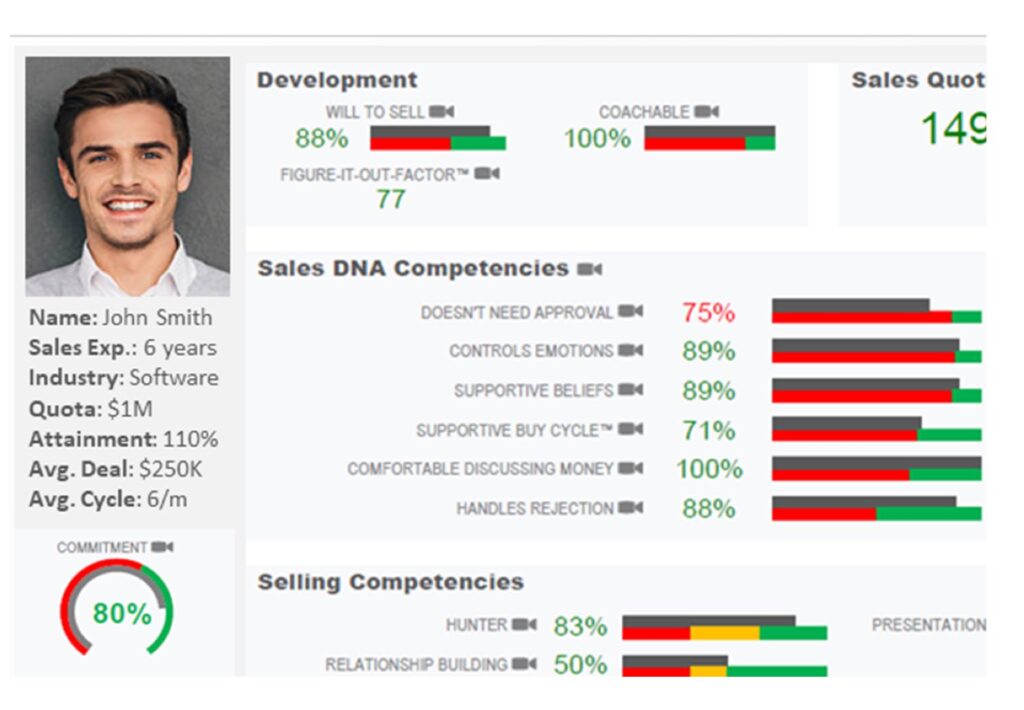60% of Candidates Ditch the Application Because it’s Too Long or Complex: How to Simplify the Job Application Process
Published on Dec 8, 2022

Say there’s an ultra-talented salesperson who found your job posting and is highly interested. They begin filling out the application and are chomping at the bit to enter the candidate pool. But after being bombarded with questions and encountering needless complexity, they ditch it without ever completing it. This happens more than you may think, which is why it’s crucial to simplify the job application process.
Here’s how to do that.
Putting Yourself in an Applicant’s Shoes
Time is valuable. And while most applicants don’t mind answering a few questions to provide essential information, it’s another story when you’re talking about question after question. Or, if they have to provide excessive personal information that isn’t really necessary at this point in the hiring process, create an account to log in, or generally be hassled by needless complexity, most will quickly sour.
To quantify, a study found that 6 out of 10 salespeople will ditch an online job application when they feel it’s too long or complex. And, it’s important to note, that some industry experts say this rate may be conservative. While we may never know the exact number, it’s safe to say that a large percentage of great candidates are lost every day simply because of long-winded or overly complex online job applications.
Therefore, fixing this issue should be a top priority for sales recruiters. Here are some specific ways to simplify the job application process.
Keep an Application to 5 Minutes Max
Let’s start with the obvious. First, you’ll want to reduce the length of time it takes to fill out an application.
According to a study that tracked half a million job seekers completing online job applications, “recruiters can boost conversion rates by up to 365% by reducing the length of the application process to five minutes or less.”
Five minutes should be the absolute maximum amount of time it takes, as there’s likely to be a sharp drop-off if it goes longer than this. But how exactly do you go about that?
I like the advice that talent management systems manager of the Pulte Group Tiffani Murray offers. She says, “ask yourself what kind of information you really need upfront to decide if you want to move candidates to the next step. You need their name, contact information, and a resume or LinkedIn profile. If you have an application process that is five or six screens deep and a candidate is filling it out on a smartphone (86% of candidates use this device), in many cases they’ll drop off.”
Remember, you have plenty of time to have shortlisted candidates elaborate on their qualifications and experience later on. The initial goal is simply to gather the essentials so you can filter through applicants.
Offer Autofill
Another common annoyance that turns many applicants off is having to fill out contact information and work history manually. Having to enter the same data over and over again can be incredibly frustrating and quickly adds minutes to the process. Fortunately, there’s innovative technology that can eliminate this time-consuming step.
Autofill grabs key information that’s been previously entered like name, email, address, and phone number, and automatically inputs it in a form so an applicant doesn’t have to. Rather than having to meticulously go through the process of entering information one at a time, an applicant can input everything with a single click or tap.
As for specific software for enabling autofill, one of my favorites is ExactHire, which allows you to quickly and painlessly set up autofill without requiring a login for applicants. This brings me to my next point.
Never Require a Candidate to Create an Account or Ask for References
One mistake I refer to as “the kiss of death” for sales recruiting is requiring a candidate to create an account, as this can instantly kill any momentum you’ve gained so far. And even the most engaged, highly interested candidate will likely bail at the sight of this. Therefore, I suggest avoiding this at all costs, as you’re likely to have countless elite talent slip through your fingers.
Also, asking for references right off the bat can be a serious roadblock to candidates completing an application. Again, I like what Tiffani Murray has to say about this. “Why not wait to ask for references when you reach the offer stage? You don’t need to add that information burden to candidates when a high percentage won’t make it to an offer.”
Automate Candidate Screening
Finally, I’d like to point out that cutting-edge software is now available that allows you to automate candidate screening using data science to match candidates to the role, culture, desired experience, and skills. HireDNA, for example, assesses a salesperson’s core selling skills and capabilities to ensure that they align with what you’re looking for.

While this doesn’t apply directly to streamlining the job application itself, it greatly optimizes the overall hiring process and increases the chances that only the best of the best will apply. In terms of success rate, companies that use HireDNA to automate candidate screening go on to have 92% of suggested candidates reach the top of their sales force within a year.
Simplify the Job Application Process for a Win-Win
While you certainly want to get enough information to get a baseline reading of a salesperson’s knowledge and experience, you should avoid going overboard with needlessly lengthy or complex applications. After all, this is merely the first step where you begin filtering through applicants to decide who moves on to the next round.
With data proving that at least 60% of candidates will bail with a long, drawn-out application process, it’s important to work out any kinks. Fortunately, this is relatively easy to do by keeping the application to a max of five minutes, enabling autofill, not requiring candidates to create an account, and not asking for references. Further, you can streamline things even more by automating candidate screening with a platform like HireDNA, which you can request a demo for here.
